 “President of Jallianwala Bagh Shaheed Parivar Samiti, Bhushan Behal, has demanded that the British Prime Minister should tender an apology for the 1919 massacre, ‘which will not only assuage the feelings of patriots and relatives of the victims, but will also confirm condemnation of brutal acts on innocent people by a British general'”. – Navjeevan Gopal
“President of Jallianwala Bagh Shaheed Parivar Samiti, Bhushan Behal, has demanded that the British Prime Minister should tender an apology for the 1919 massacre, ‘which will not only assuage the feelings of patriots and relatives of the victims, but will also confirm condemnation of brutal acts on innocent people by a British general'”. – Navjeevan Gopal
 British Prime Minister David Cameron, the only Prime Minister of Britain to visit the Jallianwala Bagh massacre site in 94 years after it took place in 1919, today termed the massacre as ‘a deeply shameful event in British history’.
British Prime Minister David Cameron, the only Prime Minister of Britain to visit the Jallianwala Bagh massacre site in 94 years after it took place in 1919, today termed the massacre as ‘a deeply shameful event in British history’.
He made these remarks in the visitors’ book of Jallianwala Bagh National Memorial Trust after paying homage to the martyrs of Jallianwala Bagh massacre where he laid a wreath on the memorial by bending on his knees and observed silence for about a minute.
While terming the massacre shameful, Cameron invoked then secretary of state for war Winston Churchill when he quoted his 1920 remark where Churchill had termed the event as “monstrous”.
“This was a deeply shameful act in British history – one that Winston Churchill rightly described at that time as ‘monstrous’,” Cameron wrote.
 He further wrote, “We must never forget what happened here.” Advocating the right for peaceful protest in an apparent correlation to Jallianawala Bagh massacre where nearly one thousand peacefully protesting people were shot dead on the orders of Brigadier-General Reginald Dyer, Cameron wrote in concluding line, “And in remembering we must ensure that United Kingdom stands up for the right of peaceful protest around the world.”
He further wrote, “We must never forget what happened here.” Advocating the right for peaceful protest in an apparent correlation to Jallianawala Bagh massacre where nearly one thousand peacefully protesting people were shot dead on the orders of Brigadier-General Reginald Dyer, Cameron wrote in concluding line, “And in remembering we must ensure that United Kingdom stands up for the right of peaceful protest around the world.”
Even as Cameron did not use the word apology nor made any public remarks regretting the incident, his noting on the book is being seen as an indirect way of expressing regret and as a gesture more than an apology.
“He knelt down on his knees to lay the wreath. He also observed silence for a minute. I think it is an indirect way of (tendering) an apology. Even more than that,” said Jallianwala Bagh National Memorial Trust Secretary S. K. Mukherjee, whose grandfather was one of the survivors in the massacre.
The remarks by Cameron today were in total contrast to what Queen Elizabeth and her husband Prince Phillip during their visit to the site had said. While Queen had called it distressing episode but had added that history cannot be rewritten, Phillip had questioned the very credentials of massacre saying the incident was projected as exaggerated.
Cameron today spent nearly 20 minutes at Jallianwala Bagh. He was welcomed by Jallianwala Bagh local managing committee chairman and veteran Congress leader Raghunandan Lal Bhatia. He then moved towards the memorial, removed his shoes. Afterwards, he laid the wreath and observed a minute’s silence.
While moving towards memorial, Cameron asked Mukherjee about the well where people had jumped during the massacre. “I pointed towards the well and told him that dead bodies of 120 people were taken out of that well. Then he asked me about bullets marks, I pointed towards the area where bullet marks were present,” Mukherjee said. Cameron, meanwhile, did not go towards the well or the wall where bullet marks stand.
During Cameron’s visit to Jallianwala Bagh where he termed the massacre as a shameful event in British history, Punjab Chief Minister Parkash Singh Badal who minutes before accompanied him to the Golden Temple was conspicuous by his absence. He was seen leaving Golden Temple with his cavalcade passing in front of the Jallianwala Bagh, located at a short distance from Golden Temple, minutes after Cameron entered Jallianwala Bagh.
The CM later saw Cameron off at Amritsar International Airport when he left along with his delegation on a chartered flight of Air India at 12:55 pm.
 Earlier, the British Prime Minister paid obeisance at the holiest shrine of Sikh religion Golden Temple where he was presented a robe of honour.
Earlier, the British Prime Minister paid obeisance at the holiest shrine of Sikh religion Golden Temple where he was presented a robe of honour.
Amid tight security arrangements, Cameron paid obeisance inside the sanctum sanctorum at 10:25 am.
Clad in a dark suit and a tie with head covered with a blue-coloured cloth, Cameron was presented a robe of honour inside the sanctum sanctorum of Harmandir Sahib, popularly known as the Golden Temple.
The British Prime Minister also mingled with a couple of devotees and chatted with them for a brief period as Gurbani played in the backdrop.
This is the first visit by a high-profile British dignitary to Amritsar after 1997, when Queen Elizabeth II and her husband Prince Philip, the Duke of Edinburgh, had visited the holy City.
Inside the Temple, he was accompanied by Punjab Chief Minister Parkash Singh Badal, who earlier received the British dignitary at the Sri Guru Ram Dasji International Airport, Shiromani Gurdwara Prabandhak Committee (SGPC) President Avtar Singh Makkar, among others.
The British Prime Minister reached the Golden Temple at about 9:50 am and spend nearly an hour inside.
Before paying obeisance by bowing his head inside the sanctum sanctorum, the British leader was taken around the Temple by officials of the SGPC, apex religious body of the Sikhs, and was also shown Shri Guru Ram Dass Langar Hall.
 Cameron had his hands folded for a brief period as he paid obeisance inside the sanctum sanctorum of the Golden Temple, which attracts a large number of devotees cutting across faiths from different parts of the world.
Cameron had his hands folded for a brief period as he paid obeisance inside the sanctum sanctorum of the Golden Temple, which attracts a large number of devotees cutting across faiths from different parts of the world.
Notably, Sikhs constitute a large segment of Indian origin people who are settled in the UK.
Around 3,000 police personnel from six districts have been deployed along with other forces, as part of the tight security arrangements, which includes Israel-trained Special Weapons and Tactics (SWAT) team.
Snipers also positioned themselves on the rooftops of the buildings situated in the vicinity of the Golden Temple, Jallianwala Bagh and at other spots from where Cameron’s cavalcade was to pass.
Forces in plainclothes have also been deployed at numerous points in the city as part of beefed up security arrangements, police sources said.
Yesterday, security agencies had carried out a mock drill in view of Cameron’s visit.
Meanwhile, President of Jallianwala Bagh Shaheed Parivar Samiti, Bhushan Behal, has demanded that the British Prime Minister should tender an apology for the 1919 massacre, “which will not only assuage the feelings of patriots and relatives of the victims, but will also confirm condemnation of brutal acts on innocent people by a British general”.
Accompanied by Badal, Makkar and his official delegation, Cameron took a full round of the marbled periphery of the Temple before entering the Sanctum Sanctorum.
 Before paying obeisance, he visited the community kitchen of the Golden Temple where he spent almost five minutes keenly watching the cooking process. He then interacted with three devotees and shook hands with them.
Before paying obeisance, he visited the community kitchen of the Golden Temple where he spent almost five minutes keenly watching the cooking process. He then interacted with three devotees and shook hands with them.
In the Sanctum Sanctorum, he was honoured with a saffron scarf offered by the Sikh Head Priest.
During his two-minute stay inside the Sanctum Sanctorum, he stood with folded hands. He also stood for a few seconds before the Akal Takht (highest Sikh temporal seat) situated in the marbled periphery.
Information officer of the Golden Temple Jaswinder Singh briefed him about the importance of Akal Takht, the brief history of the pious Sikh shrine and history of the founder of Sikhism Guru Nanak Dev.
Jassi also told him about the importance of recitation of Guru Granth Sahib.
Jassi said the British Prime Minister showed keen interest in Sikh history and culture, particularly tenets of Sikhism.
Before leaving the Golden Temple, he was presented with a replica of the Golden Temple, a set of Sikh religious books, a pictorial book comprising a Sikh encyclopedia and woollen shawls.
 While leaving, Cameron simply wrote ‘Thanks’ in the visitor book of the Golden Temple.
While leaving, Cameron simply wrote ‘Thanks’ in the visitor book of the Golden Temple.
Cameron is the highest democratically elected leader from Britain to visit the Sikh shrine.
Commenting on his visit, Makkar said it would send a positive message to the Sikh community around the globe.
After visiting the Sikh shrine, he visited the Jallianwala Bagh and factory of a basmati rice brand which exports to Britain and other countries. – The Indian Express, 20 February 2013
Filed under: india | Tagged: british army, british in india, british india, colonialism, david cameron, diplomacy, economics, england, gandhian protest, geopolitics, globalisation, golden temple, history, jallianwala bagh, massacre of indians, nationalism, psychological warfare, punjab, reginald dyer, sikhism, UK prime minister |


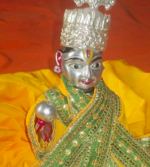






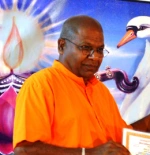

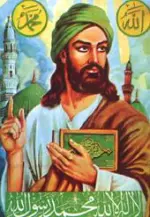
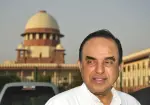
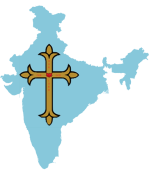



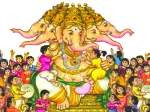



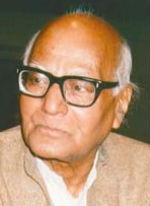

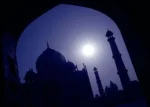


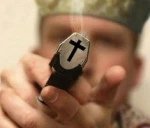

Leave a comment